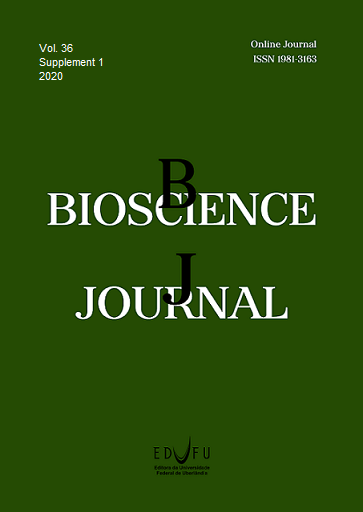Molecular characterization and core collection evaluation of Manihot esculenta Crantz
DOI:
https://doi.org/10.14393/BJ-v36n0a2020-48247Keywords:
Cassava, Core collection, Genetic resources, Manihot esculenta, Microsatellite markers, VariabilityAbstract
Cassava is one of the most important subsistence crops in tropical regions. It is necessary to preserve and to know the genetic diversity existent for the adequate use of genetic resources. The evaluation of genetic diversity among genotypes results in information about potential parents in breeding programs, allows duplicates identification, and facilitates germplasm exchange between research institutions. The objective of this study was to characterize the genetic diversity of cassava accessions of North Brazil region. A total of 106 accessions were analyzed using ten microsatellite markers. The genetic parameters estimated were: expected heterozygosity (HE), observed heterozygosity (HO) and polymorphic information content (PIC). Clustering was performed using the UPGMA and Neighbor-Joining (NJ) method. Bayesian analysis, analysis of principal coordinates and identification of a core collection were also used. The ten loci amplified 8,40 alleles on average. The average heterozygosity estimates were: HE = 0.71, HO = 0.58 and PIC = 0.72. Genetic distances ranged from 0.158 to 0.908. Six (5,66%) accesses were redundant. Clustering and dispersion analysis didn’t differentiate bitter from sweet cassava, and there wasn’t correlation between groups and collect origin. The core collection consisted of 22 individuals that represented 94% of total allelic diversity and 20,75% of the base collection. The results indicate high dissimilarity between the accessions and allowed the detection of redundant genotypes, showing the use of genetic markers as informative tools for the management of collections.
Downloads
Downloads
Published
How to Cite
Issue
Section
License
Copyright (c) 2020 Nathalia Almeida Costa, Hellen Sandra Freires da Silva Azêvedo, Luciélio Manoel da Silva, Elisa Ferreira Moura Cunha, Amauri Siviero, Tatiana de Campos

This work is licensed under a Creative Commons Attribution 4.0 International License.





